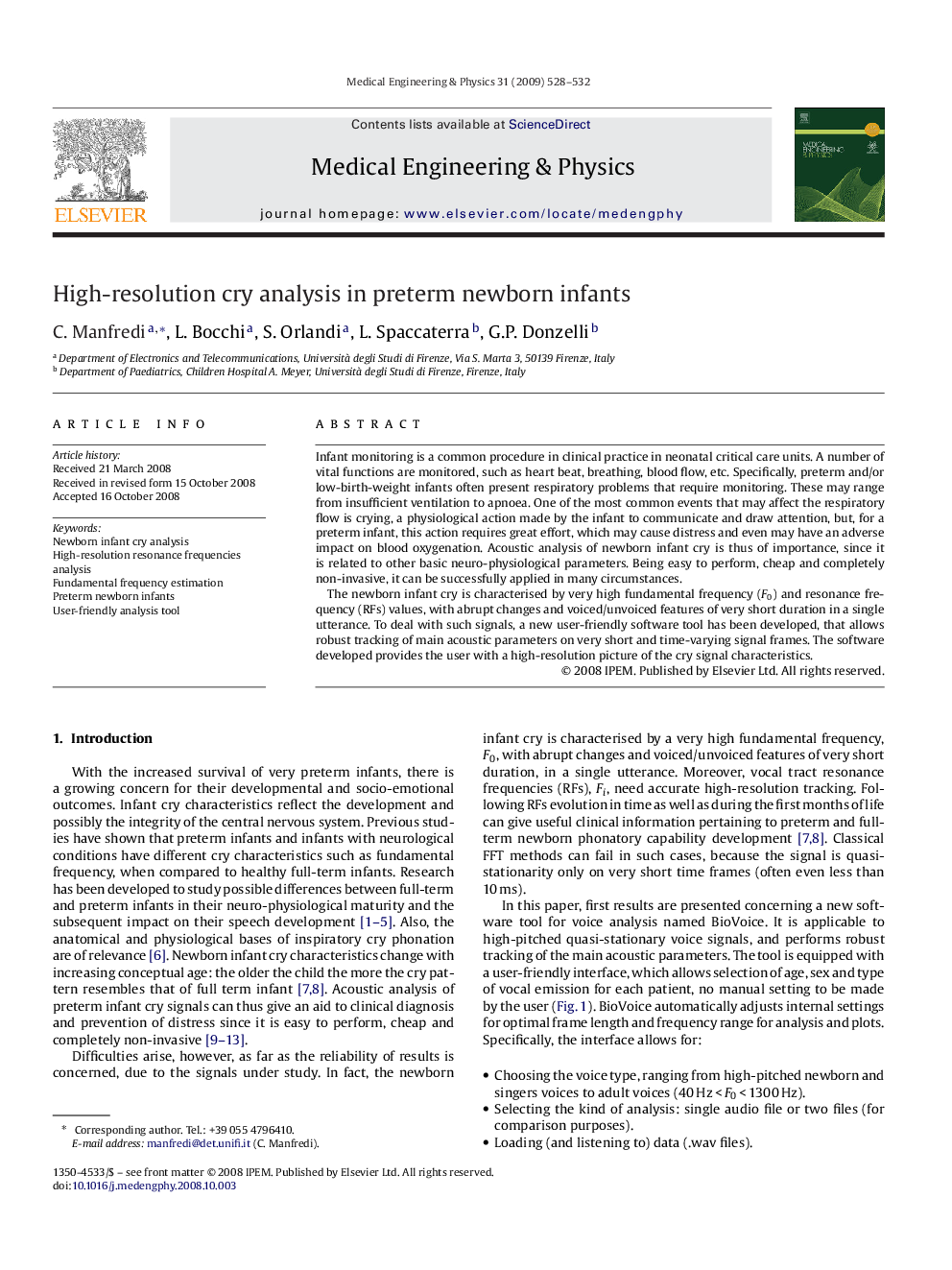| Article ID | Journal | Published Year | Pages | File Type |
|---|---|---|---|---|
| 876977 | Medical Engineering & Physics | 2009 | 5 Pages |
Infant monitoring is a common procedure in clinical practice in neonatal critical care units. A number of vital functions are monitored, such as heart beat, breathing, blood flow, etc. Specifically, preterm and/or low-birth-weight infants often present respiratory problems that require monitoring. These may range from insufficient ventilation to apnoea. One of the most common events that may affect the respiratory flow is crying, a physiological action made by the infant to communicate and draw attention, but, for a preterm infant, this action requires great effort, which may cause distress and even may have an adverse impact on blood oxygenation. Acoustic analysis of newborn infant cry is thus of importance, since it is related to other basic neuro-physiological parameters. Being easy to perform, cheap and completely non-invasive, it can be successfully applied in many circumstances.The newborn infant cry is characterised by very high fundamental frequency (F0) and resonance frequency (RFs) values, with abrupt changes and voiced/unvoiced features of very short duration in a single utterance. To deal with such signals, a new user-friendly software tool has been developed, that allows robust tracking of main acoustic parameters on very short and time-varying signal frames. The software developed provides the user with a high-resolution picture of the cry signal characteristics.
